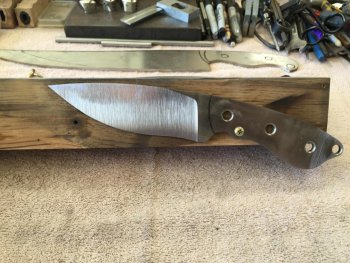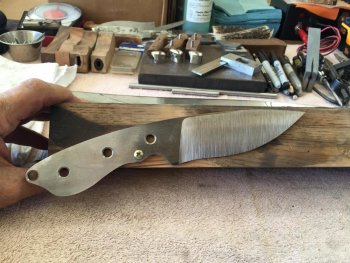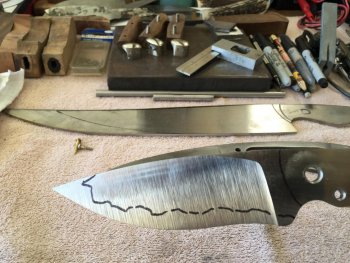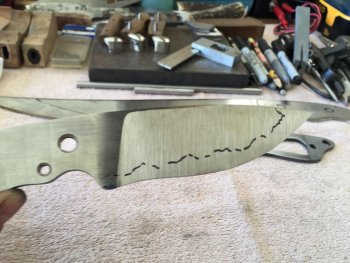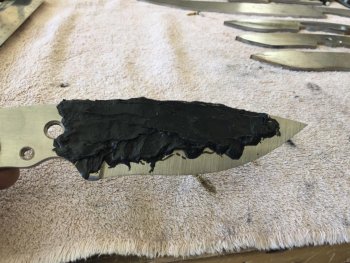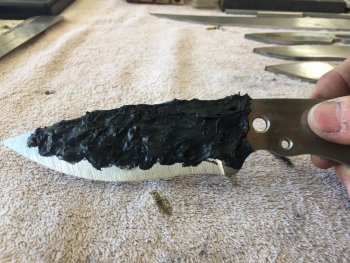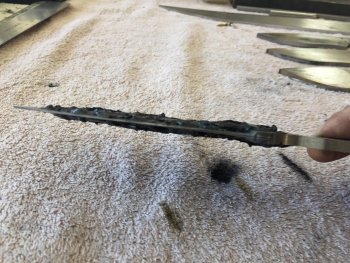Doug Lester
Well-Known Member
It also helps if you can spot decalesence. That's a shadow that passes across the blade as the steel changes phases. As the blade heats it will get a brighter red or orange-red and then it will dull slightly, like a shadow. Then it will brighten again. At this point the iron matrix in the steel has changed from body centered to face centered cubes and is ready to quench. It helps if you try this in a darkened area or even after sundown. I still back up with a magnet, however.
Doug
Doug

